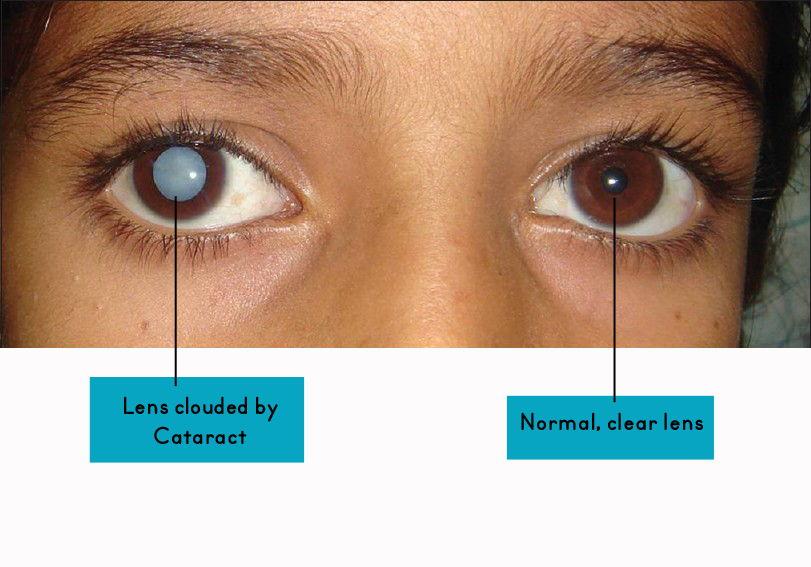ABOUT THE DISEASE
It is mostly an aging related disease caused due to clouding of the lens of the eye. The lens is inside the eye and changes size of the pupil. The lens can enlarge to let more light enter the eye in dark environments and contract the size of the pupil to let in bright light.
Until a person is around age 45, the shape of the lens is able to change. This allows the lens to focus on an object, whether it is close or far away.
With age, proteins in the lens begin to break down and the lens becomes cloudy, preventing light from passing through normally. The vision then becomes blurred. This condition is known as a cataract.

TYPES OF CATARACT INCLUDE:
- Age-related cataracts: Approximately 50 percent of people over age 65 have cataracts.
- Congenital cataracts: Babies born with cataracts.
- Secondary cataracts: These may develop as a result of other diseases, such as diabetes, or long-term use of toxic substances, certain medications (such as corticosteroids), ultraviolet light, and radiation.
- Traumatic cataracts: These can form after injury to the eye.
SYMPTOMS
The adult cataracts develop very slowly and take time to develop fully, however some of the following symptoms start showing early:
- Being sensitive to glare.
- Cloudy, fuzzy, foggy, or filmy vision.
- Problems driving at night because of distraction from headlights.
- Loss of color intensity.
- Double vision.
- Seeing halos around lights.
TESTS
Eye examination by the Opthalmologist.
TREATMENT METHODS
Initially this can be managed by glasses and better lighting, however later a surgical intervention is required.
- Cataract Surgery: This treatment removes the cloudy lens and replaces it with a substitute lens (Intraocular lens, or IOL).
You may also like to learn about:
Refractive Errors
Vision impairment/Blindness
Color blindness
Retinopathy
Eye infections
Squint